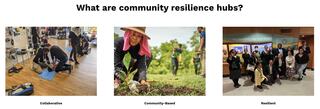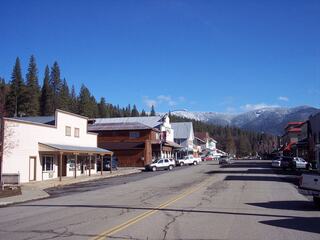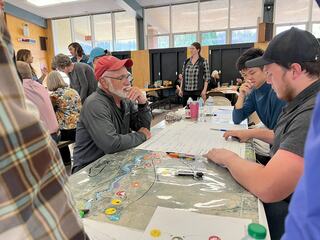Engaging Resilient Communities
This second post in our series about resilience focuses on how to identify what communities need and involve them in the process of building resilience. The first post focused on resilience design strategies that serve communities.
For many, the word “resilience” conjures visions of devastating catastrophic events. And it’s true that we resilience planners spend a lot of time thinking about how to support communities when they are most in need.
But building resilience is not merely about reacting to the most stressful times. It should also be about engaging in conversations about preparedness and community well-being. Understanding a community’s vision of resilience is an ongoing process.
Partnerships: The key to understanding communities
Over the past year, SERA has been participating with a group of organizations committed to strengthening community resilience. Community Resilience Hubs is “a coalition of over 50 organizations, government agencies, and communities across Oregon who are working to build community resilience through the creation of hubs and networks that activate before, during, and after climate disasters.”
With Unite Oregon taking a lead role, the coalition helped champion the successful passage of HB 2990, which provides $10M in support of building resilience hubs through the Office of Resilience and Emergency Management.

The success of this effort was due in large part to Unite Oregon’s efforts to build partnerships with a wide variety of organizations and key stakeholders. Now that the funding has been approved, the work truly begins as these partnerships expand to better engage with communities, planners, agencies and CBOs, creating solutions that will make communities more resilient. Our recent presentation at the OAPA annual conference focused on the value of these partnerships. See the presentation.
We at SERA believe that the most resilient aspect of a community is the community itself, and building partnerships is key as different entities—nonprofits, businesses, and government agencies—connect with communities differently. Each type of organization plays a role in the process of building resilience.
Being resilient is a collaborative community endeavor. It makes sense then that the process of building resilience is also collaborative.
Accessing funding is just one example of a step in the process that requires collaboration. Grants and federal funding are highly structured and regulated, and community organizations and local government agencies can access different funding sources. Partnerships mean that a diverse array of funding options can be available, facilitating the implementation of resilience projects.
A Community Engagement Case Study: Greenville
SERA’s work helping Greenville recover from the 2020 Dixie Fire is an excellent example of what community engagement and partnerships can look like.

The once-idyllic town of Greenville, CA | photo credit: Jeff Titcomb, Creative Commons
What Does Greenville Need? Phase 1: Listening
The first phase of our work was to listen to the stories, feelings, and needs of the community. This meant meeting community members where they were—being present, available and supporting however they wished to engage. We didn’t walk in with a predetermined vision of what the community needed. We just listened.
We then compiled what we heard and presented it back to the community for review and refinement. We heard them express many of their current thoughts and wishes for the future. They wanted to:
- Create resilient businesses
- Partner with native neighbors
- Prioritize public health
- Foster long-term economic stability
- Invest in the next generation of Greenville
What Does Greenville Need? Phase 2: Workshop
With inspired goals in place, the next step was to put the community itself in the designer’s seat, envisioning what the future of Greenville could be. Nobody knows an area, the constraints, the future opportunities, and the behavior of their people quite like the community itself. SERA guided a series of resource flow workshops that helped them to place on a map common urban elements as well as soft and hard resilient systems—food, waste, energy, and manufacturing.
This experience sparked a tremendously positive reaction from community members, who were empowered to merge sustainable design solutions with their own local knowledge. More importantly, as they participated in the design process, they could begin to see themselves in the rebuilt Greenville of the future.
This process also included a group of architecture students from nearby colleges and universities who lived in the community for a number of weeks. Their learning process included connecting with the community on a deeper level, sharing meals, playing games, and building trust, contributing to the rebuilding effort.

What Does Greenville Need? Results
At the end of the process, the community of Greenville had a clear direction forward, with some key deliverables in mind.
- A community resilience hub/center
- A town center plan
- Design/rebuild guidelines
- Infrastructure improvements
- To become the most resilient small town in America
Since then, the work has begun and SERA is proud to continue to help Greenville rebuild.
Takeaway
One of the things that SERA is taking away from this experience is a refined picture of community engagement. As we developed relationships and connections with the community throughout the process, we realized that community engagement is not just the events, activities, and workshops we planned. It’s about people sharing time and sharing stories.
Community engagement requires involvement and time, qualities that are sometimes in short supply but more possible when supported by partnerships. When done well, the result of the process is more than just a physical structure or planned town—it's a more engaged community.

